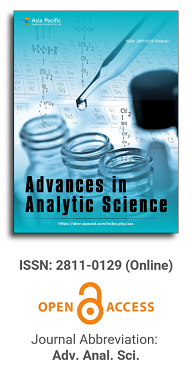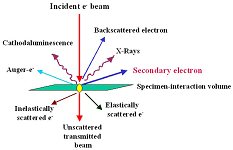
Asia Pacific Academy of Science Pte. Ltd. (APACSCI) specializes in international journal publishing. APACSCI adopts the open access publishing model and provides an important communication bridge for academic groups whose interest fields include engineering, technology, medicine, computer, mathematics, agriculture and forestry, and environment.

Analysis of inorganic elements in Vespa mandarinia Smith
Vol 1, Issue 1, 2020
Download PDF
Abstract
Objective: To analyze the inorganic elements of Vespula vulgaris Smith from different regions systematically, create an inorganic element fingerprint spectrum, and establish the basis to control the quality of Vespula vulgaris Smith. Methods: Microwave digestion with inductively coupled plasma (ICP) was used to determine 20 types of inorganic elements in Vespula vulgaris Smith and create a fingerprint spectrum for inorganic elements, conducting analyses of metal elements. Results: The species of metal elements in Vespula vulgaris Smith are rich in P, K, Na, Mg, Ca, which account for 92.32% of the total. The content of harmful elements such as Pb, Cd, As, Hg, Cu meets the requirements of National Pharmacopoeia Standards. There are different metal elements in Vespula vulgaris Smith in different regions. According to the inorganic element spectrum, the content of inorganic elements exhibits a similar distribution tendency in the order of the atomic numbers. Conclusion: Vespula vulgaris Smith contains a rich variety of metal elements, including many beneficial microelements, and the content of harmful metal elements meets the requirements of the Pharmacopoeia. The inorganic element fingerprint spectrum of Vespula vulgaris Smith can provide a reference for the identification of Vespula vulgaris Smith.
Keywords
References
- Zhang Y, Yi L, Li Y, et al. Analysis on the content of mineral elements in edible insects of Vespa aurata (Chinese). Hunan Agricultural Science. 2012; (11): 98-100.
- Zhang S. Medicinal wasp breeding technology (Chinese). New rural technology. 2006; (3): 15-16.
- Cai Z. Breeding value and product collection of medicinal wasps (Chinese). Anhui agriculture. 2000; (3): 31.
- National Pharmacopoeia Committee. Pharmacopoeia of the people's Republic of China (Volume I) (Chinese). China Medical Science and Technology Press; 2010. p. 875.
- Zhou Z. Overview of research on related factors affecting trace elements in traditional Chinese medicine (Chinese). Trace elements and health research. 2002; 19(1): 66-68.
- Qi J, Xu H, Zhou J, et al. Study on the relationship between rare earth elements and medicinal properties of traditional Chinese medicine (Chinese). Computer and applied chemistry. 2000; 181-182.
- Yan B, Fu Y, Su S, et al. ICP-MS analysis and evaluation of inorganic elements in stems and leaves of Scutellaria baicalensis from different habitats (Chinese). Chinese herbal medicine. 2018; 49(22): 5418-5425.
- Chen Y, Wang C, Kuang G, et al. Determination and correlation analysis of 26 inorganic elements in Tibetan treasure drug tijudarcy and its main mineral medicine raw materials by microwave digestion ICP-OES (Chinese). Chinese herbal medicine. 2016; 47(13): 2346-2352.
- Xu K, Chen Z, Yang Z, et al. Study on DNA bar code identification of medicinal insect Vespa aurea and its adulterants (Chinese). World science and technology-modernization of traditional Chinese medicine. 2017; 19(2): 313-318.
Supporting Agencies
Copyright (c) 2020 Yong Qiu, Yunjiao Guo, Qi Yang, Zhaoyun Li, Xinzhou Yang

This work is licensed under a Creative Commons Attribution 4.0 International License.

This site is licensed under a Creative Commons Attribution 4.0 International License (CC BY 4.0).
1.jpg)
Prof. Sivanesan Subramanian
Anna University, India





.jpg)
